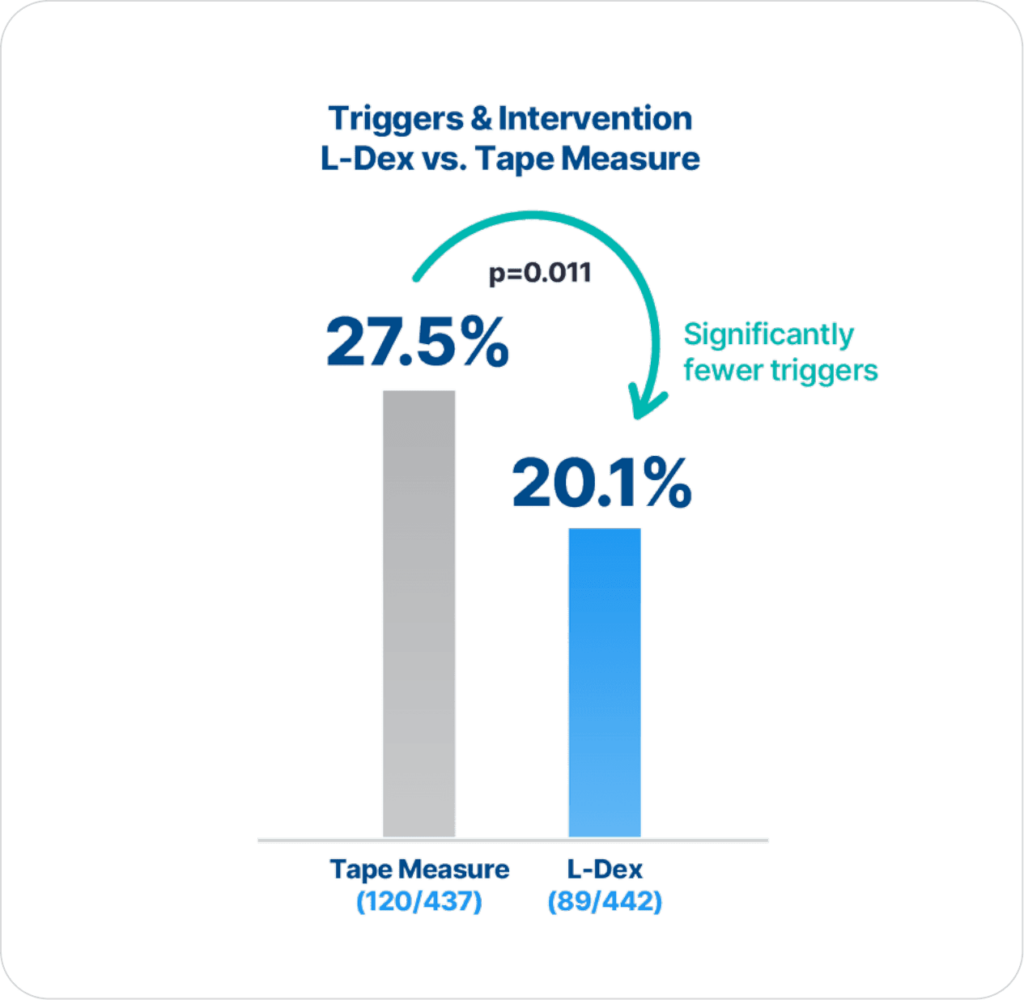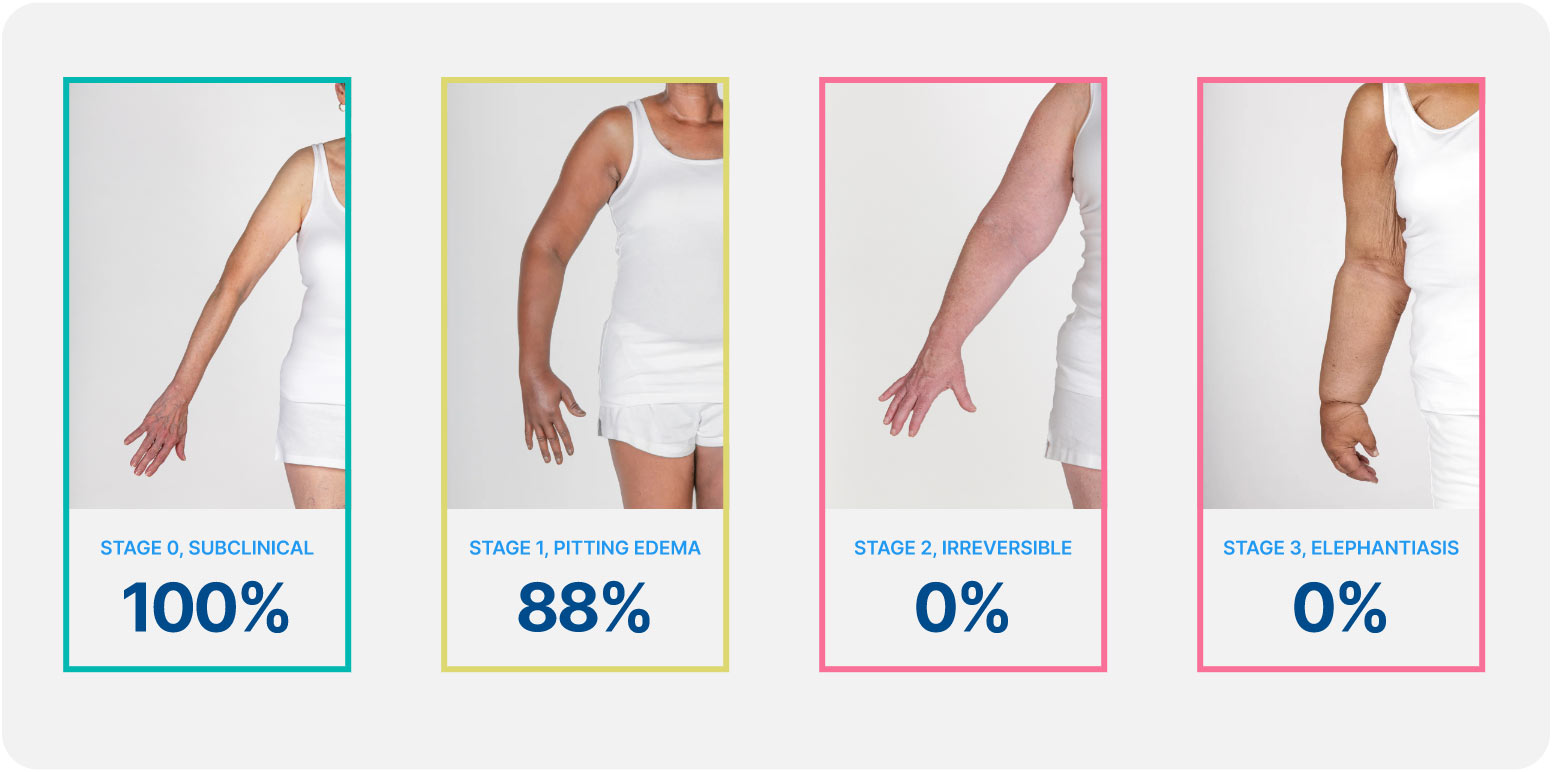
ImpediMed’s BIS technology is more precise and reliable than tape measure in detecting lymphedema (LE), as there are statistically significantly fewer triggers and interventions for those assessed with BIS compared to tape measure (p=0.011)2.
Extensive clinical evidence shows that using ImpediMed’s bioimpedance spectroscopy (BIS) technology for early detection and intervention reduces the impact of chronic lymphedema on breast cancer patients.
Lymphedema develops in stages, and a university of Kansas study found that when lymphedema is detected at stage 0 or stage 1 it is reversible, but in stages 2 and 3 it is not. These findings demonstrate how early conservative intervention and prospective monitoring with BIS can significantly lower rates of BCRL and persistent BCRL (pBCRL).¹

The PREVENT Trial involved 10 centers across the US and Australia and was the largest randomized controlled trial (RCT) to assess lymphedema prevention in breast cancer patients.
The findings support impedance measurements being made reliably using either the lead or stand- on device, representing supine and upright measurement positions, respectively. Data between devices were, however, not directly interchangeable.
The L-Dex ratio correlated with limb volume and clinical assessment of pitting edema, and physiologic measures of lymphatic function, and demonstrated face, construct, and criterion validity in response to intervention. These findings support the adjunctive use of the L-Dex ratio with limb volume measurements for objective diagnosis, evaluation of lymphedema severity, longitudinal serial evaluation of lymphedema, and response to conservative and surgical interventions.
Coroneos, C.J., et al., Correlation of L-Dex Bioimpedance Spectroscopy with Limb Volume and Lymphatic Function in Lymphedema. Lymphat Res Biol, 2018
Study of 172 healthy females indicates that impedance ratio thresholds are consistent with those previously identified.
In summary, new criterion thresholds for the assessment of BCRL by BIS have been determined. Although statistically different to the established reference values, the magnitude of the difference is sufficiently small to be of no practical clinical consequence. It is concluded that, in accord with the observations of Ridner et al., the present reference thresholds may be used with confidence as markers for lymphedema.
Ward, L., et al., Confirmation of the reference impedance ratios used for assessment of breast cancer-related lymphedema by bioelectrical impedance spectroscopy. Lymphatic Research and Biology, 2011. 9(1): p. 47-51.
The impedance ratio thresholds for lymphedema of the legs have been established, opening the way for BIS to become established clinically for the early detection and assessment of lower limb lymphedema.
Ward, L., et al., Reference ranges for assessment of unilateral lymphedema in legs by bioelectrical impedance spectroscopy. Lymphatic Research and Biology, 2011. 9(1): p. 43-46